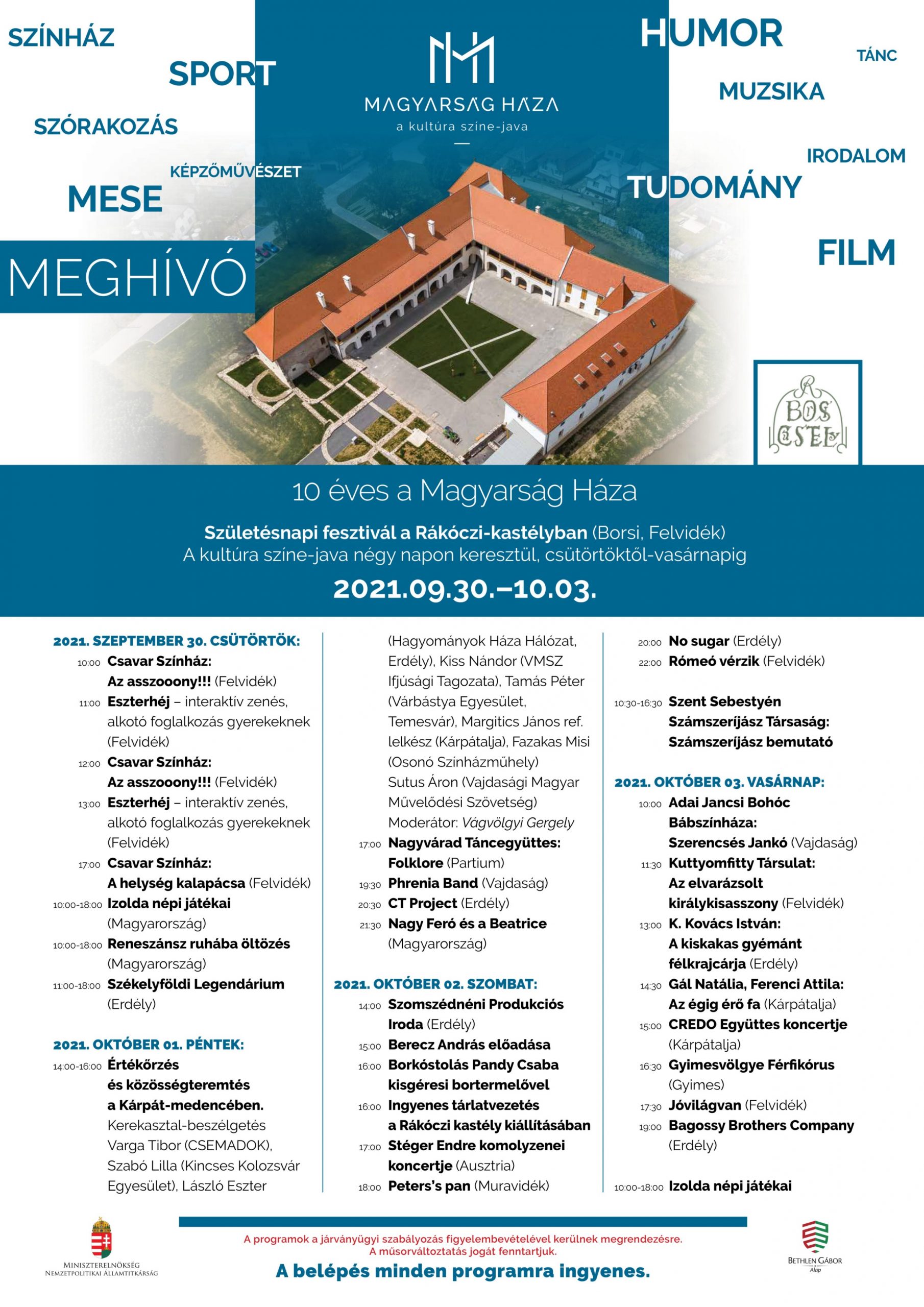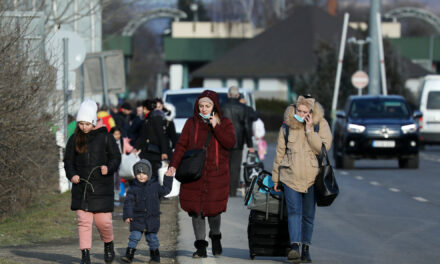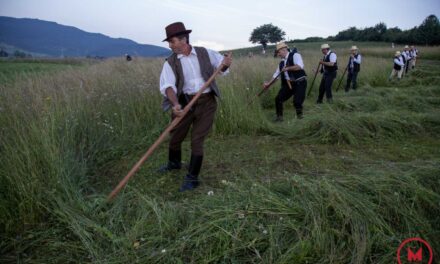The institution that symbolizes the unity of all Hungarians, the Magyarság Háza, was established in 2011 with the support of the government, so it is ten years old this year. Director Krisztina Csibi spoke to felvidek.hu about the past ten years and the four-day cultural festival to be held between September 30 and October 3 as the opening of the birthday program series.
This summer, the beautiful Rákóczi Castle, renovated for the most part with the support of the Hungarian government, was handed over, this truly 21st-century complex with accommodation, exhibition spaces, and a restaurant, located a few kilometers from the Hungarian-Slovakian border. We gladly accepted the opportunity offered to us by the László Teleki Foundation, which takes care of the castle. It may be a bit far from Budapest, but for years we have been organizing our programs in such a way that they are not only visible in the capital. We strive to reach as many of our events as possible in the areas inhabited by Hungarians abroad, in addition to the big cities, also in the small settlements, no matter how far away they are, it is worth the effort.

Director Krisztina Csibi/Source. Velvidek.ma
From the first minute, we focused primarily on children and young people, families, not neglecting the older age groups, of course. People under the age of twenty were the main target group of our interactive exhibition entitled We, Hungarians, but this exhibition proved to be particularly popular in general.
Our storytellers are very popular, with which we can appeal to the whole family. The goal of the Hungarian House is not only to preserve traditions, but also to find the topics that occupy the youth of the 21st century.
According to him, it is more difficult to reach young people, because they are the path-seeking age group, they want to see the world, compare what they see elsewhere with what they see at home, which is why they want to get involved strongly and show that we Hungarians also have our values, and there is another plus: the the experience of belonging to a community. "And we also want to help our young, beginning artists, for example, to offer small bands that have had few opportunities to perform in the Akvárium Klub or on the A 38 ship."
The online presence, which has also strengthened as a recent development, and the result of which was not only that we were able to give regular work to the creators and thus remain our partners, but also that we were able to reach the Hungarianness of the diaspora to a much greater extent, and the circle of them expanded a lot. , who could regularly follow the programs of the Hungarian House.
All ages are regular participants in the festivities - March 15, October 23 - while, for example, the folk dance movement attracts young people. They love it very much, they work very well, in many places they don't even know Hungarian anymore, but they dance and sing in Hungarian.
"The purpose of the Hungarian House is to create a bridge between locals and foreigners, foreigners and foreigners. Starting with the network of sister settlements, they can connect with each other on many threads, and this is even more so in culture. The most successful were the joint art productions or product presentations between a local settlement and a settlement across the border. For example, our joint Kalotaszeg-Kalocsa exhibition, when the two famous folk art landscapes brought their works to us, proved to be surprisingly successful for us as well. But the situation is similar with the exhibition on built heritage, which is traveling together with the Teleki László Foundation, for which hundreds of people also gather on occasion."

Source: aelvidek.ma
Even after the Bors festival, the series of birthday programs of the Hungarian House will continue. The exhibition consisting of ten units is being prepared and will be on display during the fall. It recalls the past decade of the House of Hungarians with the help of photos, videos, objects, and musical materials. In the meantime, the materials of the tender announced for the visual artists of the diaspora are constantly arriving. The art historian curator selected nearly fifty of nearly three hundred works, and our new exhibition is made up of these works. The mentioned two exhibitions will go on tour around the world. We will also present the Great Picture Book of the House of Hungarians in late autumn. The volume publishes an exclusive and representative selection of tens of thousands of photos taken during the ten years' programs. And in December, for the first time, we will present the Magyarság Háza award to those creators and authors who were in some way connected to the Magyarság Háza in this first decade.
Source and image: velvidek.ma













